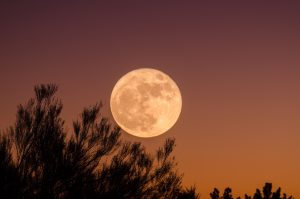For centuries, human beings have been fascinated by the natural satellite of Earth, which is called the Moon. From crescent to full moon, the ever-changing phases of the Moon have been the source of many myths and legends. The question of whether the full moon could occur on consecutive nights is a fascinating one. In order to unravel the mystery of this full moon, it is necessary to understand how the orbit and rotation of Earth, as well as the phases, work. Read more now on https://meaning-of-number.com/can-there-be-a-full-moon-two-nights-in-a-row/.

Understanding Lunar Phases
Its relative position to Earth and the Sun determines its phases. While the illuminated moon faces our sun as it circles our planet, the visible light from Earth varies. Eight primary moon phases are: the new moon phase, waxing crescent (first quarter), waxing Gibbous full moon (last quarter), and waning Gibbous crescent. Full moons occur when the full moon appears directly opposite of the sun with the whole visible side lit up.
Earth’s rotation and the Moon orbit
We must take into account the Earth’s rotation and the Moon’s orbit to determine if a full-moon can be seen two consecutive nights. A synodic moon is a lunar orbit that takes about 29.5 day to complete. Earth’s axis rotates once every 24 hours.
Rare Occurrences
The moon moves slowly, so a “near-full” moon could appear consecutively. It is important to note that this phenomenon has been referred to by many as “the Blue Moon,” however, historically it was the third of four full moons in the season. Today, it is used more frequently to describe the second full moon that happens within a single calendar month.